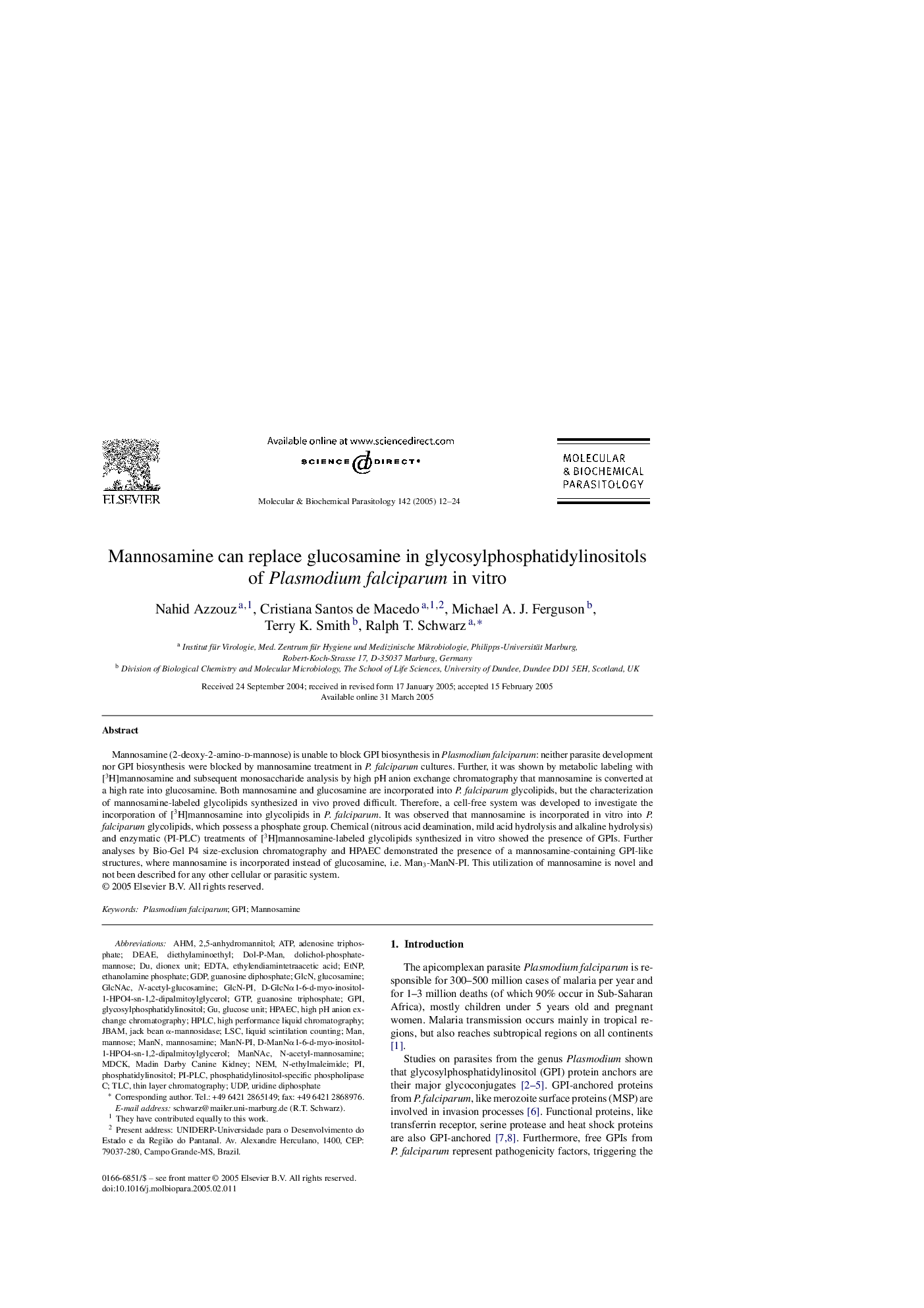| Article ID | Journal | Published Year | Pages | File Type |
|---|---|---|---|---|
| 9140017 | Molecular and Biochemical Parasitology | 2005 | 13 Pages |
Abstract
Mannosamine (2-deoxy-2-amino-d-mannose) is unable to block GPI biosynthesis in Plasmodium falciparum: neither parasite development nor GPI biosynthesis were blocked by mannosamine treatment in P. falciparum cultures. Further, it was shown by metabolic labeling with [3H]mannosamine and subsequent monosaccharide analysis by high pH anion exchange chromatography that mannosamine is converted at a high rate into glucosamine. Both mannosamine and glucosamine are incorporated into P. falciparum glycolipids, but the characterization of mannosamine-labeled glycolipids synthesized in vivo proved difficult. Therefore, a cell-free system was developed to investigate the incorporation of [3H]mannosamine into glycolipids in P. falciparum. It was observed that mannosamine is incorporated in vitro into P. falciparum glycolipids, which possess a phosphate group. Chemical (nitrous acid deamination, mild acid hydrolysis and alkaline hydrolysis) and enzymatic (PI-PLC) treatments of [3H]mannosamine-labeled glycolipids synthesized in vitro showed the presence of GPIs. Further analyses by Bio-Gel P4 size-exclusion chromatography and HPAEC demonstrated the presence of a mannosamine-containing GPI-like structures, where mannosamine is incorporated instead of glucosamine, i.e. Man3-ManN-PI. This utilization of mannosamine is novel and not been described for any other cellular or parasitic system.
Keywords
GlcNEtNPDol-P-Man2,5-anhydromannitolHigh pH anion exchange chromatographyAHMHPAECPI-PLCDEAEUDPMDCKGPiManNAcLSCGTPGlcNAcN-ethylmaleimideTLCPhosphatidylinositol-specific phospholipase CN-Acetyl-Glucosamineuridine diphosphateAdenosine TriphosphateATPEthanolamine phosphateEDTAGDPjack bean α-mannosidasediethylaminoethylphosphatidylinositolMannMannoseMadin Darby canine kidneyManmannosamineNEMglucose unitPlasmodium falciparumthin layer chromatographyhigh performance liquid chromatographyHPLCglucosamineglycosylphosphatidylinositolGuanosine triphosphateguanosine diphosphate
Related Topics
Life Sciences
Biochemistry, Genetics and Molecular Biology
Molecular Biology
Authors
Nahid Azzouz, Cristiana Santos de Macedo, Michael A. J. Ferguson, Terry K. Smith, Ralph T. Schwarz,
